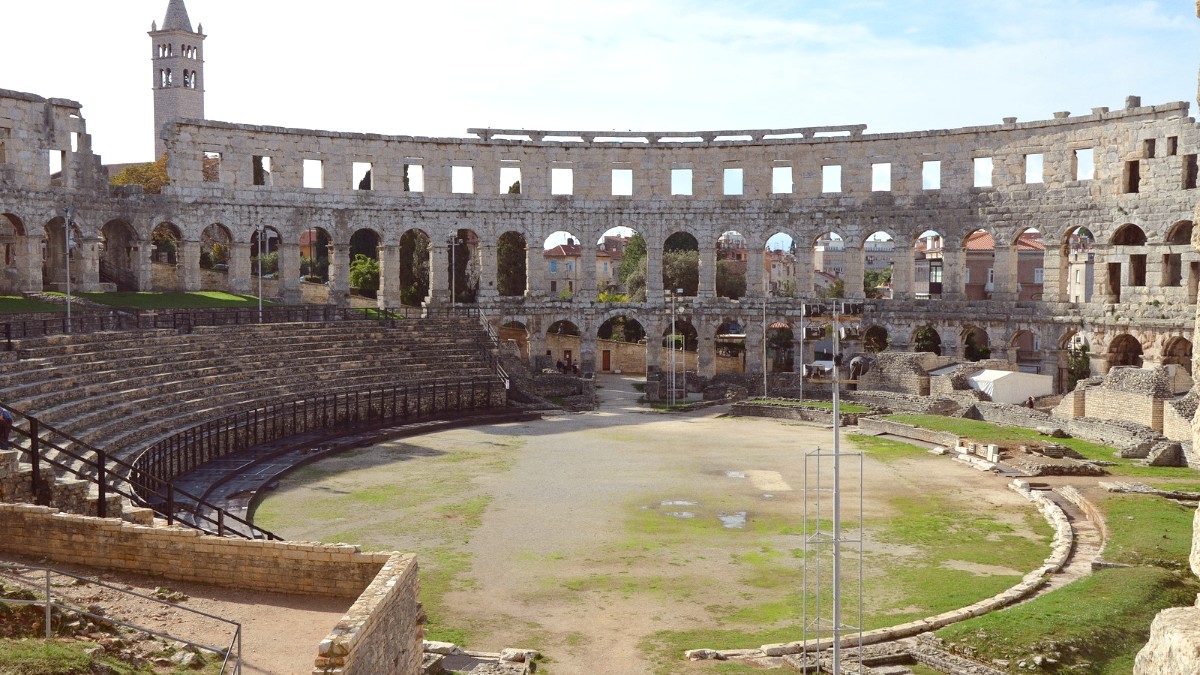
Istria, Croatia
Pula, located at the southernmost tip of the Istrian Peninsula, is its capital, merging Roman grandeur, Venetian charm, and modern Croatian life. Its Roman Arena remains a dominant landmark.
The city's strategic location and natural harbor shaped its history, supporting shipbuilding, fishing, and trade. A Mediterranean climate offers warm, dry summers and mild, wet winters. Pula's culture holds influences from Illyrian, Roman, Venetian, Austro-Hungarian, and Yugoslavian eras.
Relies on tourism, shipbuilding, fishing, wine production, and olive oil.
Pula Arena, a well-preserved Roman amphitheater and active venue.
Shoulder seasons (May-June, Sept-Oct) for balanced weather, fewer crowds, and lower prices.
Euro (€). ATMs are common. Cash is useful for small vendors.
5-10% in restaurants for good service is common, but not mandatory.
Generally safe with low crime rates. Petty theft can occur in crowded areas.
Universal emergency number for all services is 112.
Pack smart for your Pula adventure, considering climate, activities, and essentials.
Pula Airport (PUY) is the main gateway. Seasonal direct flights from Europe. Year-round connections via Zagreb. Airport shuttle to city center.
Buses are efficient for intercity travel within Croatia and internationally. Car rental offers flexibility for Istria exploration.
Seasonal catamarans connect Pula to Venice, Italy. Local ferries link to other Croatian coastal towns and islands.
Moving around Pula is straightforward, with various options available to suit different preferences and travel styles.
Offers maximum flexibility for exploring Istria. Book in advance for best rates. Parking can be challenging in Pula city center.
Drive on the right, seatbelts mandatory.
A fun way to explore coastal roads. Helmets are mandatory and provided. Requires appropriate license category.
Check license requirements.
Available from private shops and hotels. Pula Bike offers options for city cruising or mountain trails (e.g. Cape Kamenjak).
Helmets recommended for safety.
Pula is a destination rich in history and natural beauty. Embrace its unique blend of ancient charm and modern life. Enjoy the local cuisine, explore its hidden gems, and immerse yourself in the atmosphere.
With careful planning and an open mind, your journey to Pula will be an unforgettable experience.